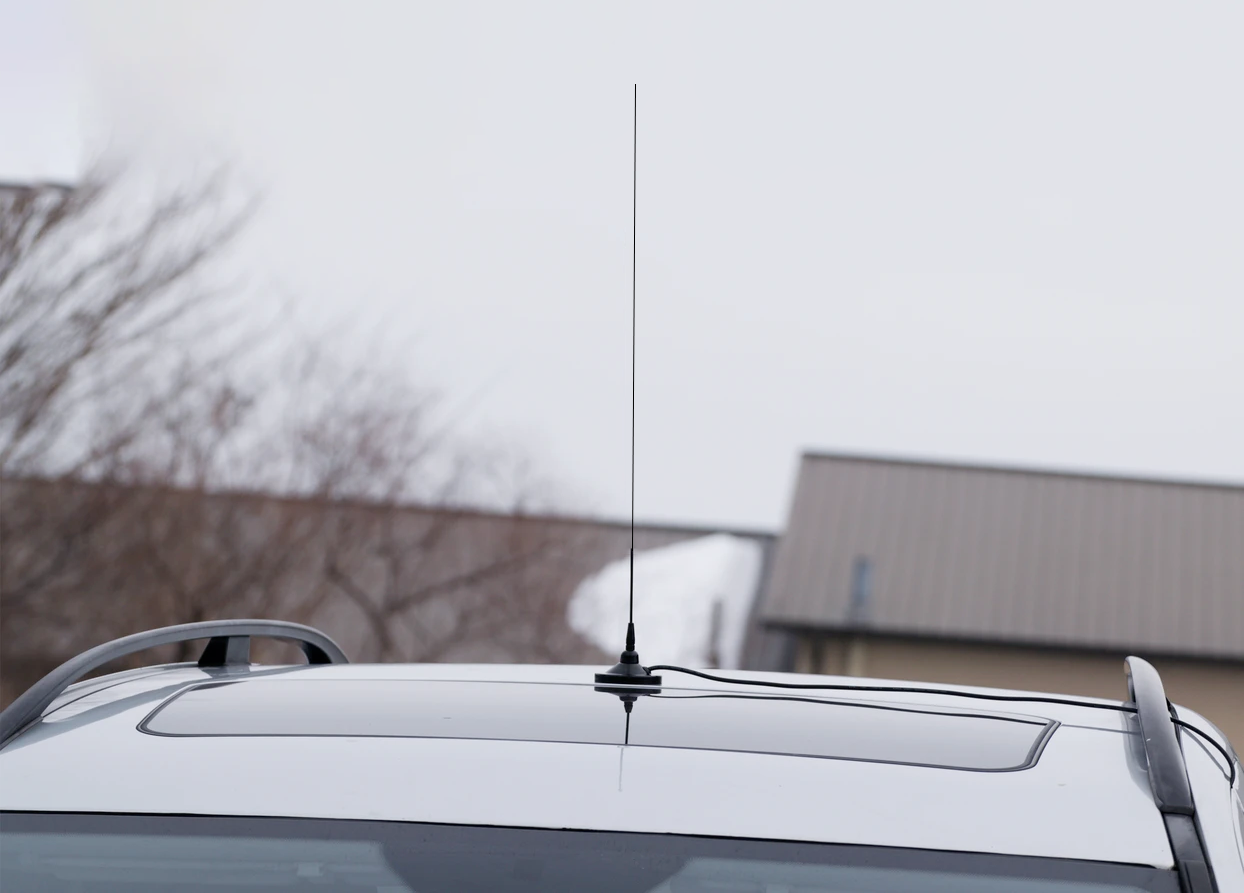“It is better to have a 1 Watt transmitter on a 100’ft(33m) pole than a 100 Watt Transitter on a 1’ft(0.3m) pole” -Someone
Antennas are really complicated, but we are not trying to run a commercial radio station.
Our goal is to cover enough ground to run a rally and that is not so hard.
Radio pretty much can only travel in straight lines, unobstructed. This is called Line of Sight. Real transmission towers are often in mountains or on tall buildings in order to cover entire cities. There is some wiggle room, where radio can be heard when obstructed, but it is best to think of it as a fuzzy zone around the areas where line-of-sight is available.
In the interest of keeping things short, we are only going to talk about two antenna types, a stealthy short one called a quarter-wave antenna, and a really large one called a five-eights-wave antenna.

The quarter wave antenna is best for anytime you need things to be easy or the transmission car is driving around.
It plops on your rooftop with a magnet and is about 33” long (1m). There are two downsides to this. One is that is is not very high off the ground, giving you less range. The other is that this is an omni directional antenna, which means it wastes some of your precious power sending signals into the sky, where your audience is not. Buy Links: Antenna and magnetic base and adapter ~$50 Antenna must be cut to match frequency, ~88.X FM is full length, shorter for higher frequencies.

The five-eights antenna is tall, like 8’ft (2.5m) and has three long radial spokes at the base. It must be mounted on a mast, making things complicated for cars. Mast holders for trailer hitches are available, as are mast holders that you park on. It increases your range by about 50% (or more if you get it up higher) the legal limit for car height is 14’ft, and at around 12’ft you start hitting trees. Not reccomended to use while the car is moving. Datasheet Buy Link
Antenna cable connectors
UHF Plugs and Sockets
The most common connectors for antennas are called UHF connectors. The socket is called SO-239, and the plug is called PL-259. (cable upper right, jack lower left)Strangely, very few FM transmitters have these plugs.
BNC Plugs and Sockets
Most lower power transmitters use BNC (cable on top, jack on bottom)TNC is similar, but it is screw-on. Adapters are available for this too.
N-Type Plugs and Sockets
Higher-power transmitters use N-type (cable on left, jack on right)An adapter can be used to connect any antenna to any jack.
Antenna Wires
Antenna wires should be as short as possible. They should not be run near any other wires (power, audio, microphone, etc) as this can cause hum in your broadcast.
Here is a great article about FM range and antennas